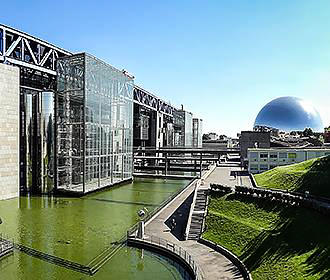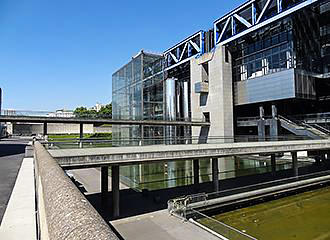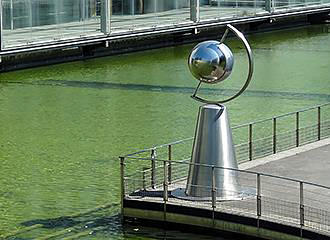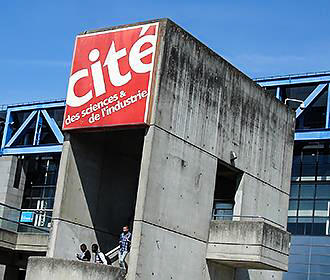History and Facts on the Cite des Sciences et de l’Industrie
The Cite des Sciences et de l’Industrie is located within the cultural centre and park in Paris called the Parc de la Villette and has become the largest science museum in Europe that has seen well over 70 million visitors since it first opened in 1986.
The beginnings of Cite des Sciences et de l’Industrie
Originally the Villette site was home to the Paris abattoirs and cattle market, but when these closed down the whole area became waste land and it was in 1977 that President Valery Giscard d’Estaing launched a plan to transform the area.
The Etablissement Public du Parc de la Villette was set up and headed by Paul Delouvrier, who was the former chairman of EDF, and in 1979 work began to clear the large 55 hectare site and demolish old buildings, however, the Grande Halle was put onto the list of historical monuments in Paris and was saved.
But it was the physicist Maurice Levy, who drafted a report detailing the ideas and scope of having a museum of science, technology and industry, and his report proposed the use of an unfinished building that was originally meant to be a cattle auction market.
The idea and the project was approved and in 1980 there were 27 architects who entered into a competition for the design of a museum of science, technology and industry, which was eventually won by Adrien Fainsilber, because his project encompassed both the actual museum and this large park in Paris.
The design of the building actually encompasses three key elements, which are water, vegetation and light and these are utilised in the following ways.
- The Cite des Sciences is surrounded by water.
- Vegetation, which is not only present in the Parc de la Villette, but also inside the building, as there is a large bioclimatic greenhouse that faces the park
- The third is light, as this natural light enters the building through two domes that are 17m in diameter.
Eventually, after all the major construction work that took place over a few years, the Cite des Sciences et de l’Industrie was opened one year after the Geode by the French President Francois Mitterrand.
Key dates at the Cite des Sciences Museum
1977 - The Plan was launched to redevelop the villette area into the cultural centre called the Parc de la Villette.
1979 - Headed by Paul Delouvrier, the Etablissement Public du Parc de la Villette was set up for the development of the area.
1979 - Again in the same year, Mauric Levy drafted the report for the museum of science, technology and industry.
1980 - This saw the design competition won by the architect Adrien Fansilber
1985 - The Geode geodesic structure that houses a cinema was first opened and construction of the Cite des Sciences continued.
1986 - The Cite des Sciences et de l’Industrie was opened by President Francois Mitterrand on 13th March while, very appropriately, Halley’s Comet was overhead.
1992 - This saw the first opening of the Cite des Enfants designed for children
2002 - The College de la Cite is launched.
2007 - A new Cite des Enfants opens for young children for the ages of 2 and 7.
2008 - A new permanent exhibition called the Story of the Universe opens.
2009 - With the resounding success of the Cite des Enfants, a new one opens designed for children between the ages of 5 and 12.
2009 - In the same year there is also another permanent exhibition that opens to the public, which is called Earthwatch: The Satellite Revolution.
Some quick facts about the Cite des Sciences
The Cite des Sciences is the largest science museum in Europe and focuses on science and technology incorporating environmental, geo-economic and ethical questions that are raised by technological progress and innovation.
This museum is the fifth most popular museum in Paris after The Louvre, which is the most visited museum, the Pompidou Centre, the vast and impressive Chateau Versailles and the Musee d’Orsay.
There have been well over 70 million people visit the Cite des Sciences since it first opened and on an average it sees around 16,500 people per day, although the place is becoming even more popular with people coming on holiday to Paris.
And to give you a quick idea on some figures from way back in 2008, out of just over 3 million visitors almost 1,700,000 visited the exhibitions, but over 550,000 watched a film at The Geode.
However, there were over 500,000 people who utilised the resource centres within the Cite des Sciences et de l’Industrie and others went there for lectures run by the college and events at the conference centre.
So, as you can no doubt tell, this is one of the very popular tourist attractions in Paris, but is also frequented by Parisians and the Cites des Sciences has also received the Tourism and Handicap label that covers physical, mental, hearing and visual disabilities.



